Introduction
In today’s rapidly evolving business landscape, the quest for operational efficiency and enhanced productivity is more critical than ever. Automated workflows stand at the forefront of this transformation, offering a powerful solution to streamline repetitive tasks, reduce errors, and enhance overall accuracy. By leveraging intelligent automation tools, companies can significantly boost productivity, achieve substantial cost savings, and improve employee satisfaction.
Real-world examples, such as the success stories of Delivery Hero and St. James Winery, illustrate the tangible benefits of automation, from faster turnaround times to improved resource management. As industries continue to embrace automation, the strategic importance of these technologies becomes increasingly evident, promising a future of optimized processes, better decision-making, and heightened agility. This article delves into the multifaceted advantages of automated workflows, providing valuable insights into how businesses can harness these innovations to drive efficiency and growth.
Enhanced Efficiency
Automated workflows significantly enhance operational efficiency by streamlining repetitive tasks, thus allowing employees to concentrate on high-value activities. For instance, companies are deploying tools like dashboards, inventory trackers, and alert systems to help human managers oversee processes more effectively. According to a study by SS&C Blue Prism, intelligent processes have led to remarkable gains in productivity, compliance cost avoidance, and employee satisfaction, yielding a net present value of $53.4 million per customer over three years. A real-world example is Delivery Hero, where technology decreased the average account recovery time from 35 minutes, helping 53,000 employees regain access quickly and reduce downtime. Furthermore, the beneficial influence of mechanization on work safety and employee health is clear, with research indicating a 16% decrease in workplace injuries in the U.S. and better health results for low-skilled workers. The industrial automation market is anticipated to expand from $147.06 billion in 2019 to $264.69 billion by 2026, reflecting the growing strategic significance of automation in contemporary operational practices.
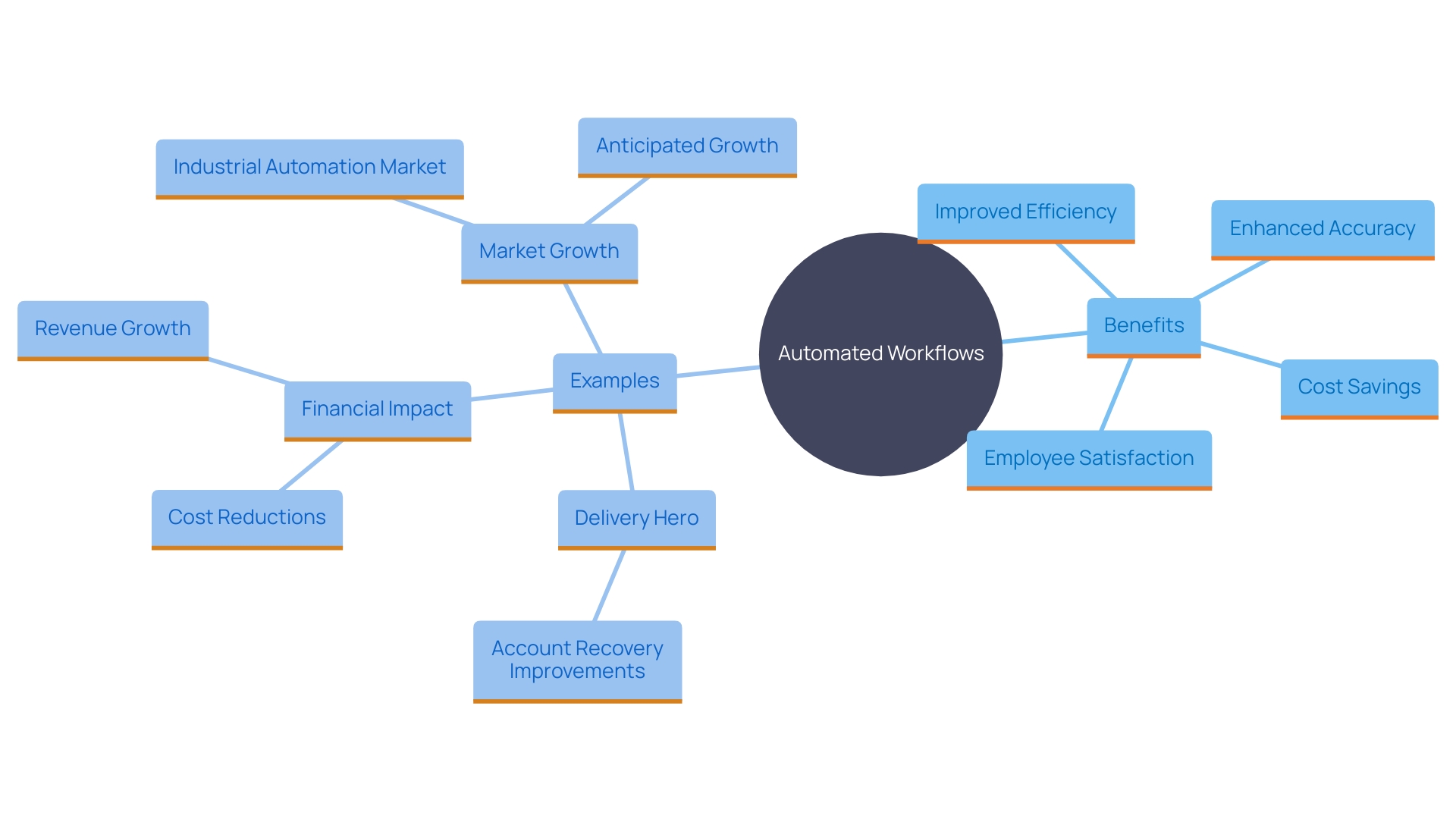
Increased Productivity and Savings
Automating workflows can lead to substantial cost savings for businesses. By reducing the time employees spend on repetitive tasks, companies can reallocate their workforce to more strategic activities that drive revenue and growth. For instance, St. James Winery, a prominent wine producer in the U.S., resorted to mechanization due to increased growth and a lack of available labor. This action not only enhanced their production rates but also led to improved margins, showcasing the concrete advantages of streamlining workflows.
A study by SS&C Blue Prism found that intelligent mechanization technologies can significantly enhance productivity and employee experience, leading to an overall net present value of $53.4 million per customer over three years. Sales professionals, for example, have reported saving over two hours daily by automating tasks such as scheduling meetings and data entry, allowing them to focus more on connecting with customers and closing deals.
The advantages of workflow mechanization are also clear in the wider adoption trends. Over 80% of corporate leaders are hastening the implementation of work process technologies, acknowledging its ability to enhance productivity and lower operating expenses. In fact, companies that successfully implement workflow automation often enjoy a good return on investment by increasing service levels to end-users and minimizing operational losses.
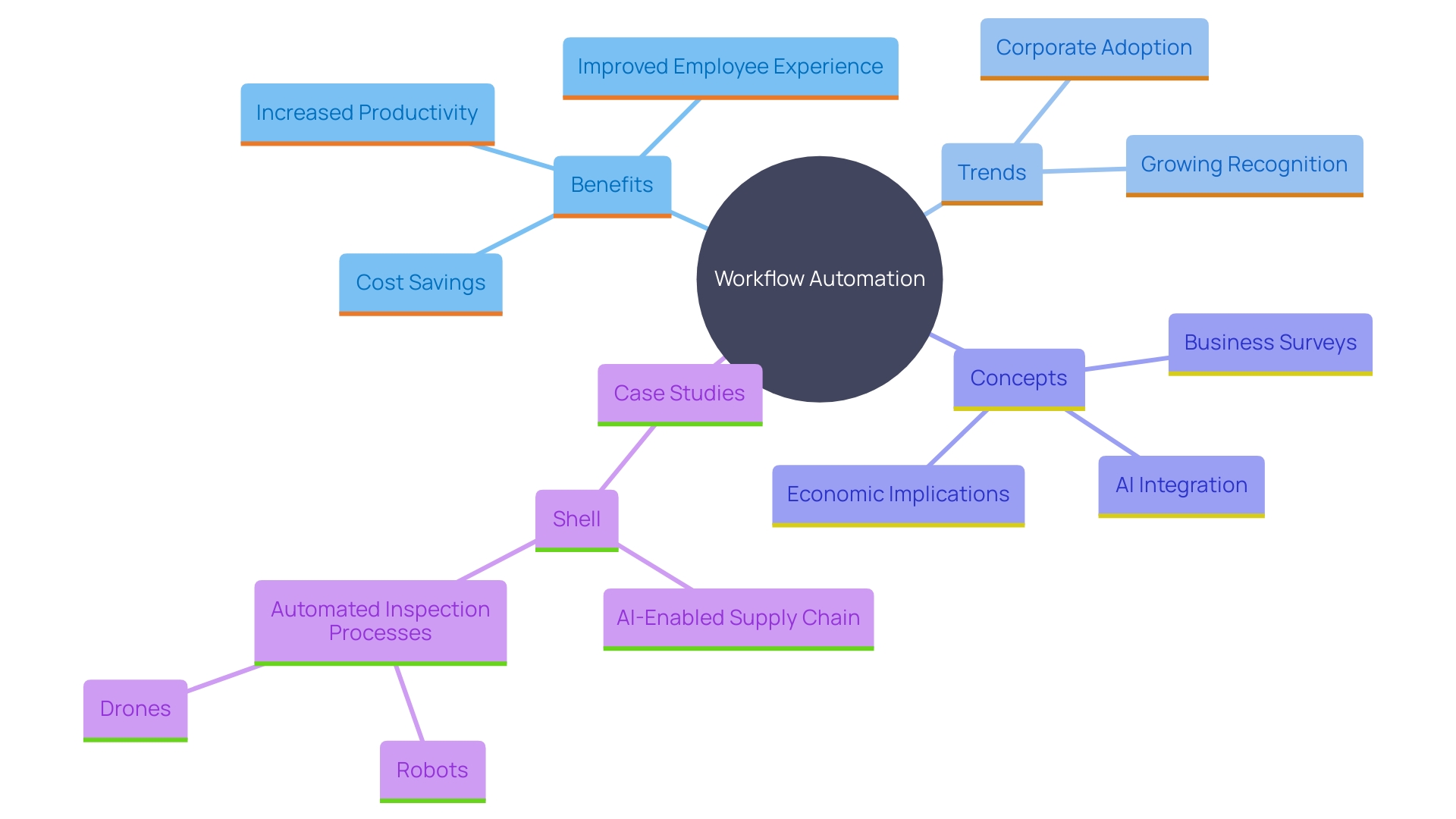
Reduced Errors and Improved Accuracy
Automation significantly reduces human error, ensuring tasks are completed with higher precision. This improvement in accuracy enhances the quality of work and minimizes the risk of costly mistakes that can disrupt business operations. For instance, Ryanair has effectively employed technology in its Disaster Recovery (DR) processes, standardizing procedures to eliminate human error. Furthermore, their auto-remediation strategies, such as automatic web server restarts, emphasize the reliability and efficiency that mechanization provides to critical operations.
Based on a study conducted by Duke University’s Fuqua School of Business, 60% of firms intend to implement mechanization technologies in the upcoming year to improve job performance. The advantages are evident: automating processes not only saves time and decreases expenses but also enhances job satisfaction by enabling employees to concentrate on more strategic activities. Moreover, mechanization guarantees adherence to industry regulations, a vital element for fields such as finance and healthcare.
As Annette Reuther, Head of Growth (Europe), noted, mechanization helps teams manage complex tasks across multiple markets efficiently, from marketing to customer support, thus magnifying their impact. The increasing use of AI technologies in streamlining processes highlights the substantial efficiency improvements organizations can realize. Bank of America analysts predict that AI could boost S&P 500 operating margins by 200 basis points over the next five years, revolutionizing corporate efficiency. These advancements in mechanization technology underscore its transformative potential in improving operational accuracy and overall business performance.
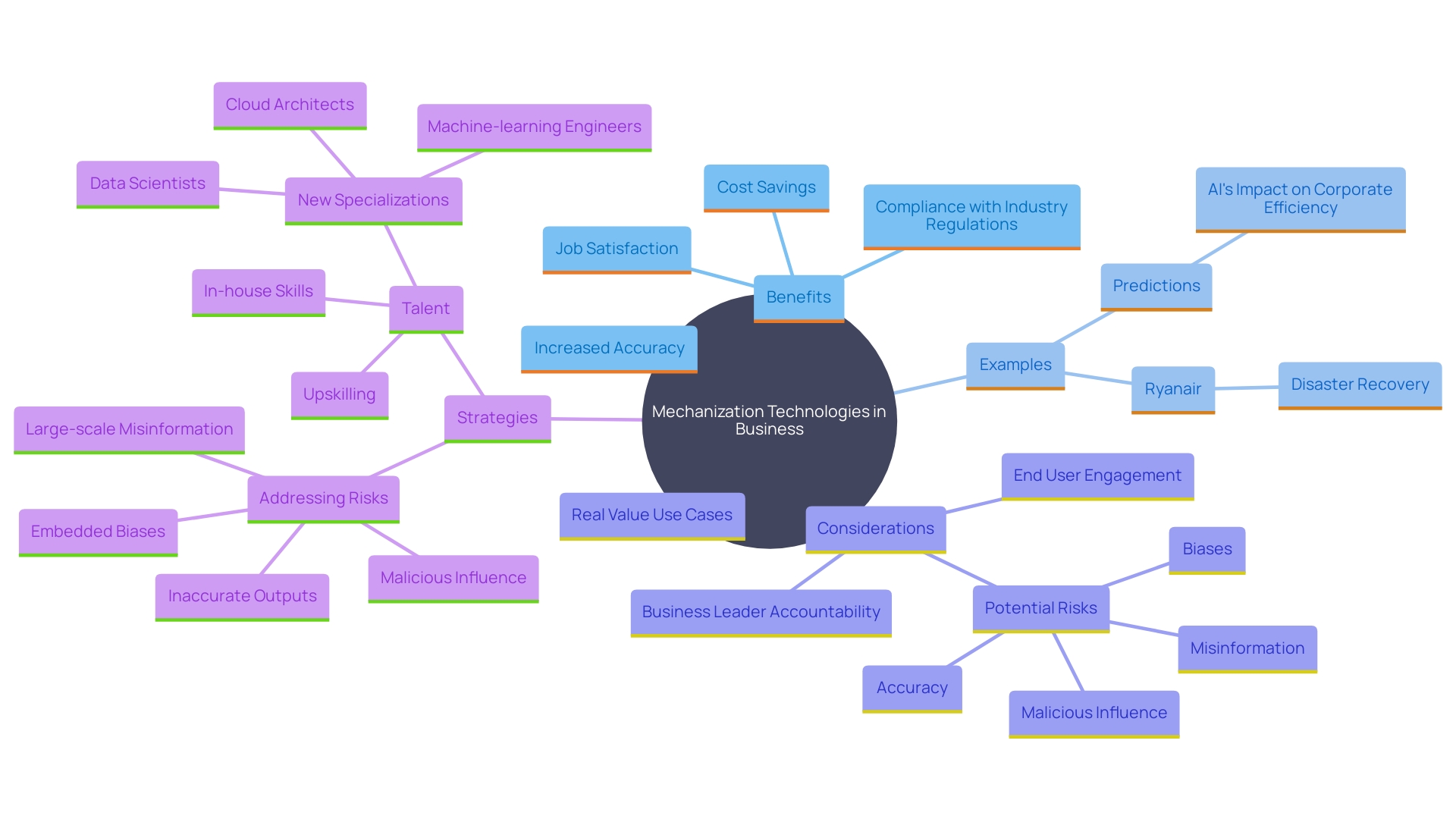
Improved Transparency and Visibility
Automated workflows provide real-time insights into operations, enhancing tracking and monitoring capabilities. This level of transparency is crucial for identifying bottlenecks and inefficiencies, which allows for timely interventions. For instance, Rivian, a global automotive manufacturer, relies on automated workflows to coordinate its dispersed teams across multiple states, from design in California to manufacturing in Illinois. This setup ensures that specialized talent can collaborate seamlessly. Likewise, Ryanair has streamlined its disaster recovery system through systemization, minimizing human error and enhancing response efficiency. In the healthcare sector, a Texas health system implemented a next-generation wireless system to automate non-value-added activities, thereby optimizing staff resources and enhancing patient care. As stated in a McKinsey report, the implementation of automation and AI in organizations is on the increase, with 80% of firms speeding up task automation. This shift not only saves time and money but also improves accuracy and job satisfaction, as seen in various sectors leveraging these technologies effectively.
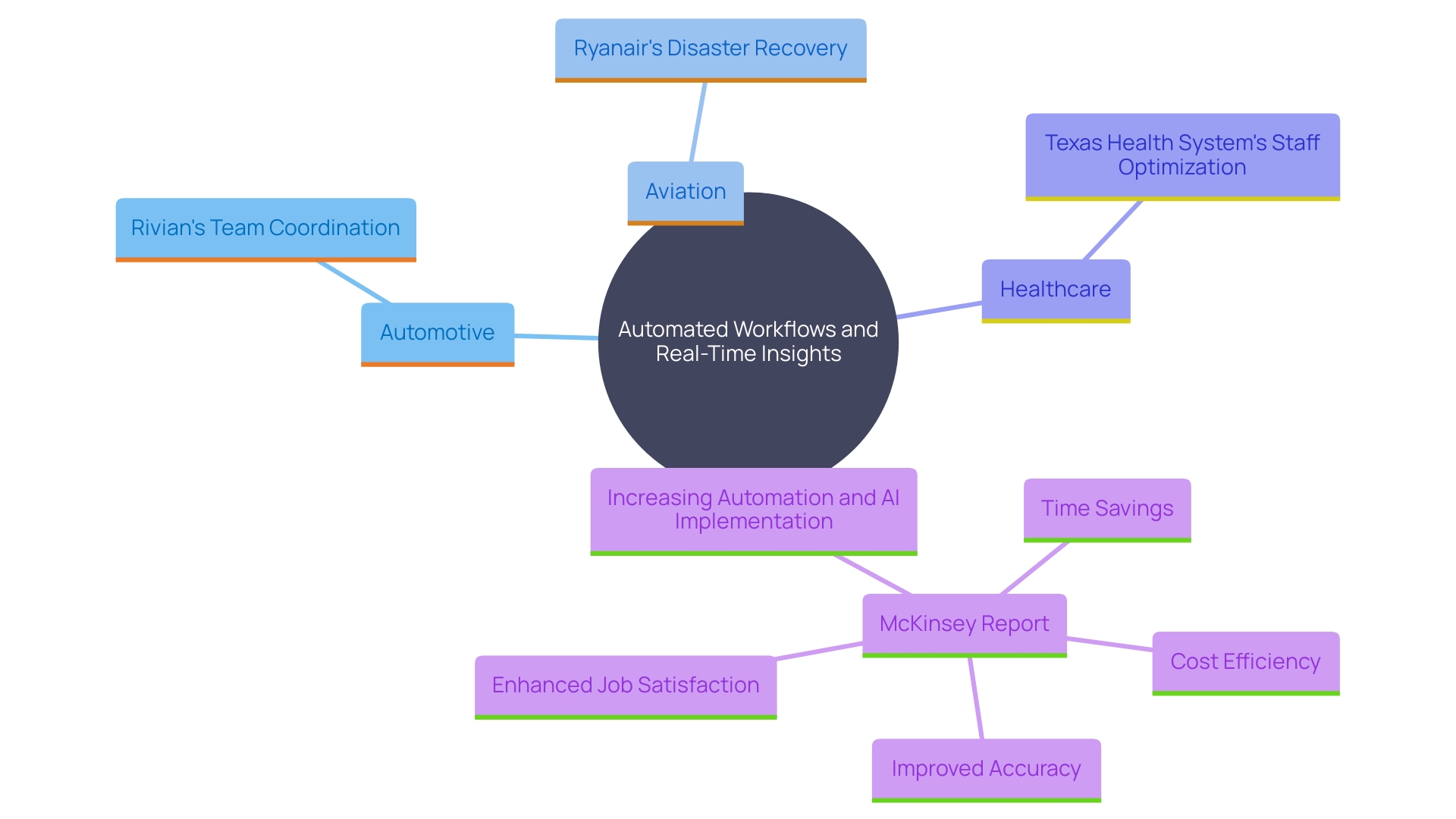
Better Resource Management and Allocation
Automation empowers organizations to allocate resources more effectively by harnessing data-driven insights into workload and performance. For instance, a company leveraged AI to automate the extraction of key values from over 2,000 PDF documents, a task previously performed manually by an employee. This not only freed up the employee to focus on more creative and impactful projects but also provided significant value to the company. The scalable solution was then implemented in various operational units, optimizing processes across the board.
Introducing AI and mechanization solutions permits enterprises to construct a modular tech stack, allowing teams to access essential data and tools promptly. This approach facilitates rapid innovation and seamless upgrades, ensuring optimal utilization of resources. As emphasized by a current workplace example, incorporating mechanization decreased the effort required for overseeing device lifecycles by 90%, enabling the organization to reassign talent to essential functions, thus enhancing productivity.
Statistics show that productivity in the U.S. has grown at a modest rate of 1.4% from 2005 to 2023. However, mechanization can significantly boost this figure by reducing the time and effort required for repetitive tasks. By dismantling internal data barriers, organizations can reveal new opportunities and enhance their financial performance, as shown by enterprises saving thousands, sometimes millions, of dollars through insights discovered by automated processes.
Business insights derived from data analysis are crucial for identifying areas ripe for automation. For example, understanding how fuel usage fluctuates or tracking real-time vehicle locations can help organizations make informed decisions that enhance resource allocation and productivity. By linking data to other organizational applications, companies can attain a more integrated and efficient workflow, ultimately resulting in improved ROI and a more sustainable operation.
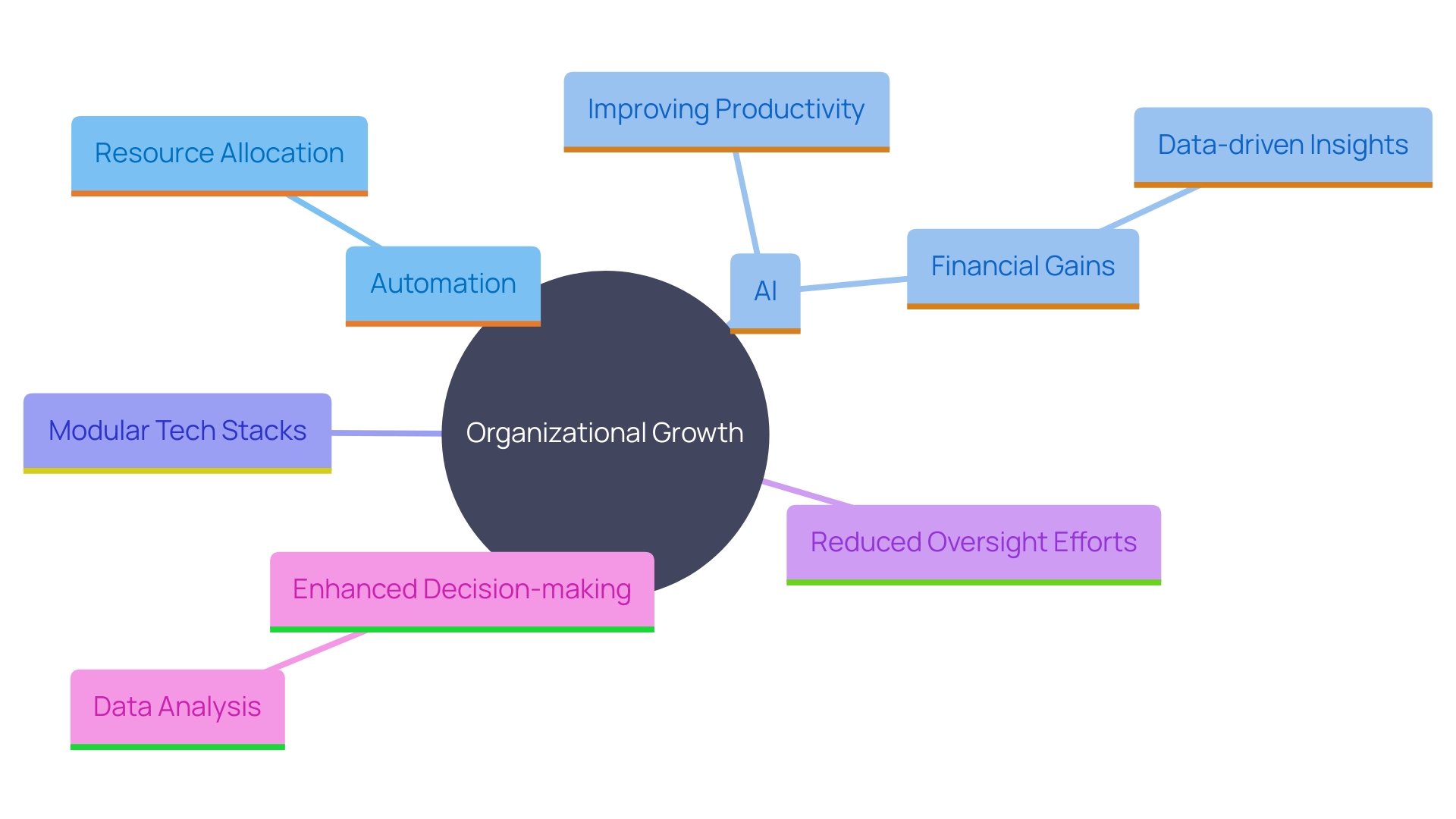
Faster Turnaround Times and Improved Customer Satisfaction
Streamlined processes empower businesses to respond to customer inquiries and fulfill orders with remarkable speed. This efficiency is pivotal in enhancing customer satisfaction and fostering loyalty, as clients increasingly value timely and reliable service. For instance, the Modern Store digital transformation project at Office Depot has revolutionized operational efficiency. By connecting data, assets, and people through in-store handsets and tasking software, 13,000 store associates across 1,500 stores can now spend more time serving customers. This has led to better scheduling, task assignment, and real-time reporting, thereby improving customer service.
Moreover, companies like St. James Winery, which adopted automation to handle increased demand and labor shortages, have seen significant improvements in production speeds and margins. Automation has also allowed them to measure ROI in terms of labor per case, demonstrating tangible benefits in operational efficiency.
Statistics underscore the importance of these improvements. According to a customer service study, 80% of customers believe that the experience a company provides is as important as its products or services, and 83% feel more loyal to brands that respond promptly to their complaints. These figures emphasize that efficient methods and timely service are not merely operational objectives but strategic necessities that drive customer loyalty and business success.
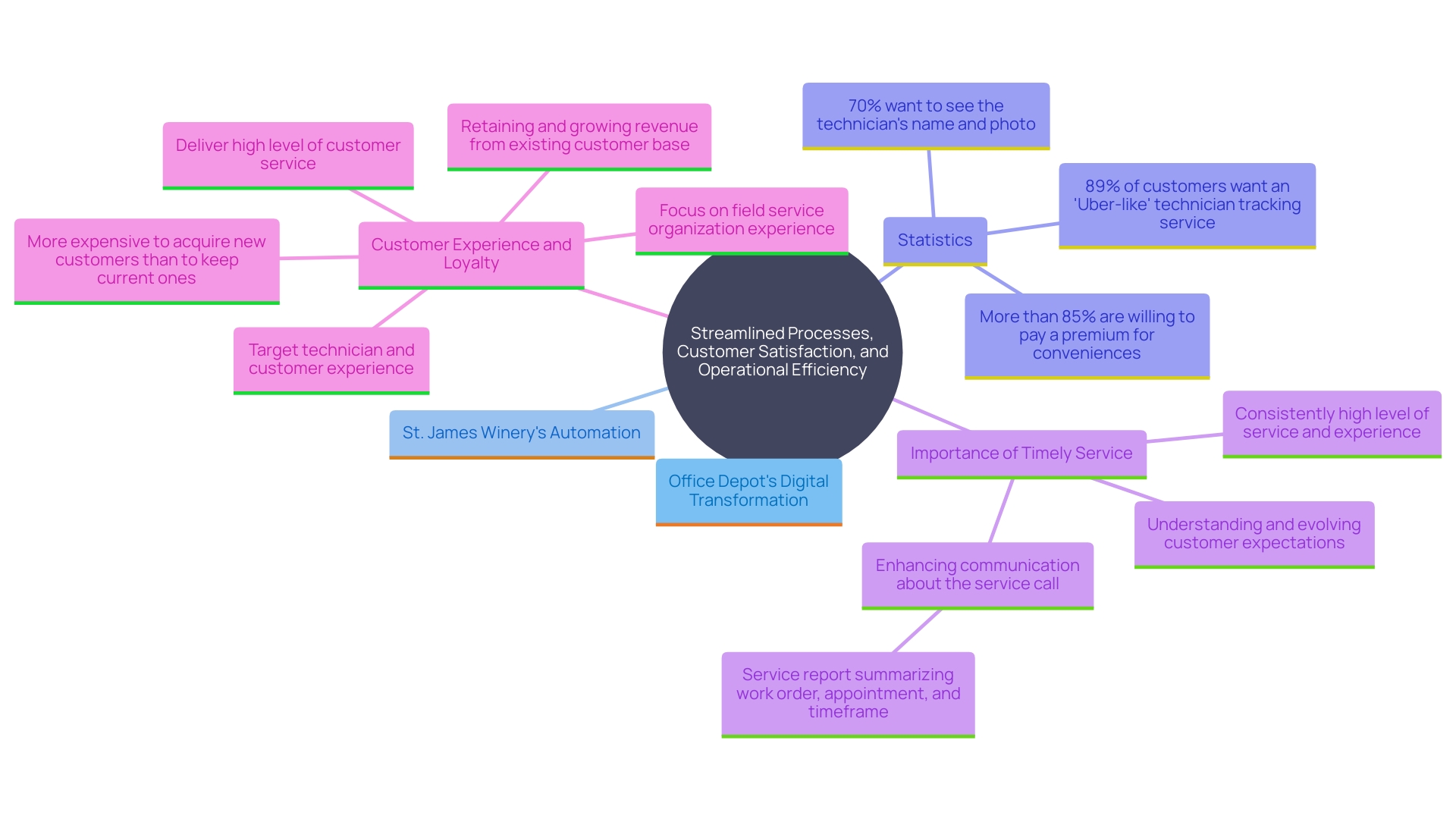
Enhanced Collaboration and Communication
Automated workflows significantly enhance team communication by providing a centralized platform for managing activities. For example, when Delivery Hero faced the challenge of employees getting locked out of their accounts, they implemented an automated system that streamlined the verification and restoration process, drastically reducing downtime. This case illustrates how automated workflows not only enhance collaboration but also ensure that all team members are aligned and well-informed.
Furthermore, tools such as Slack Lists have transformed project and activity management by incorporating these functions directly into a platform where teams are already collaborating. This eliminates the need for switching between multiple applications, thereby reducing inefficiencies and fostering better communication. According to a Gartner report, over 85% of companies using cloud-hosted project management tools such as these have reported faster project delivery times due to improved real-time collaboration and centralized data management.
The success stories of companies like Dubber further emphasize the benefits of automated workflows. By adopting advanced orchestration tools like Temporal, Dubber was able to transition from a basic orchestration tool to one that significantly enhanced their workflow efficiency. This shift enabled them to better manage responsibilities such as abuse detection and customer complaint handling, showcasing the transformative power of well-implemented automation.
In essence, automated workflows provide a robust framework that supports seamless communication and collaboration, ensuring that every team member is on the same page and every task is managed efficiently.
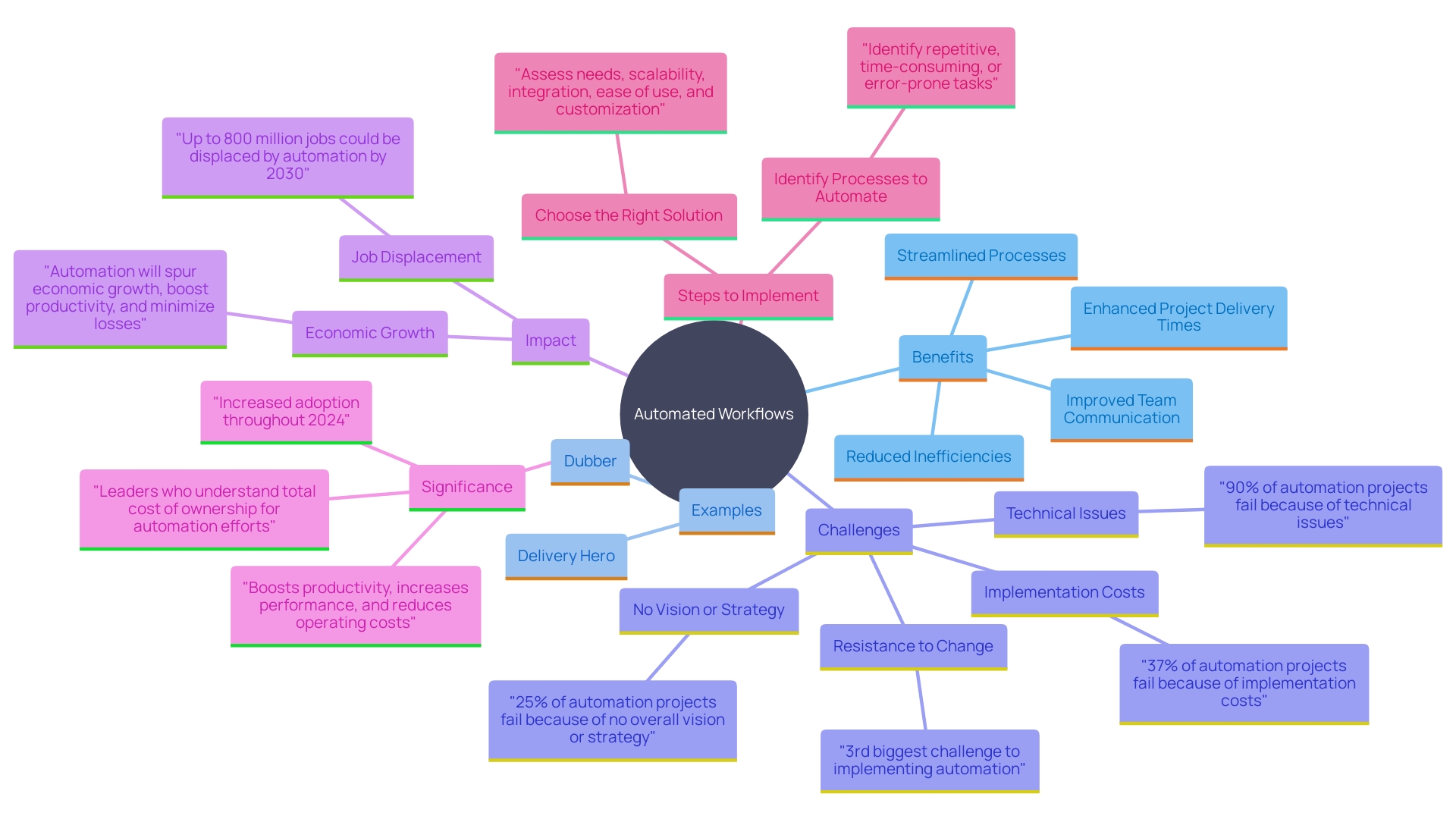
Cost Reduction and Scalability
Automation significantly reduces operational costs by minimizing reliance on manual processes and boosting accuracy. For instance, St. James Winery utilized technology to address labor shortages and enhance production efficiency, resulting in higher margins. Automated systems not only decrease errors but also optimize resource utilization, ensuring tasks are performed with high precision and reducing waste. According to a study by SS&C Blue Prism, organizations saw a net present value of $53.4 million over three years, attributed to increased productivity and cost savings. Moreover, mechanization enables companies to expand operations smoothly without a corresponding increase in expenses, highlighting its strategic significance in contemporary commercial environments.
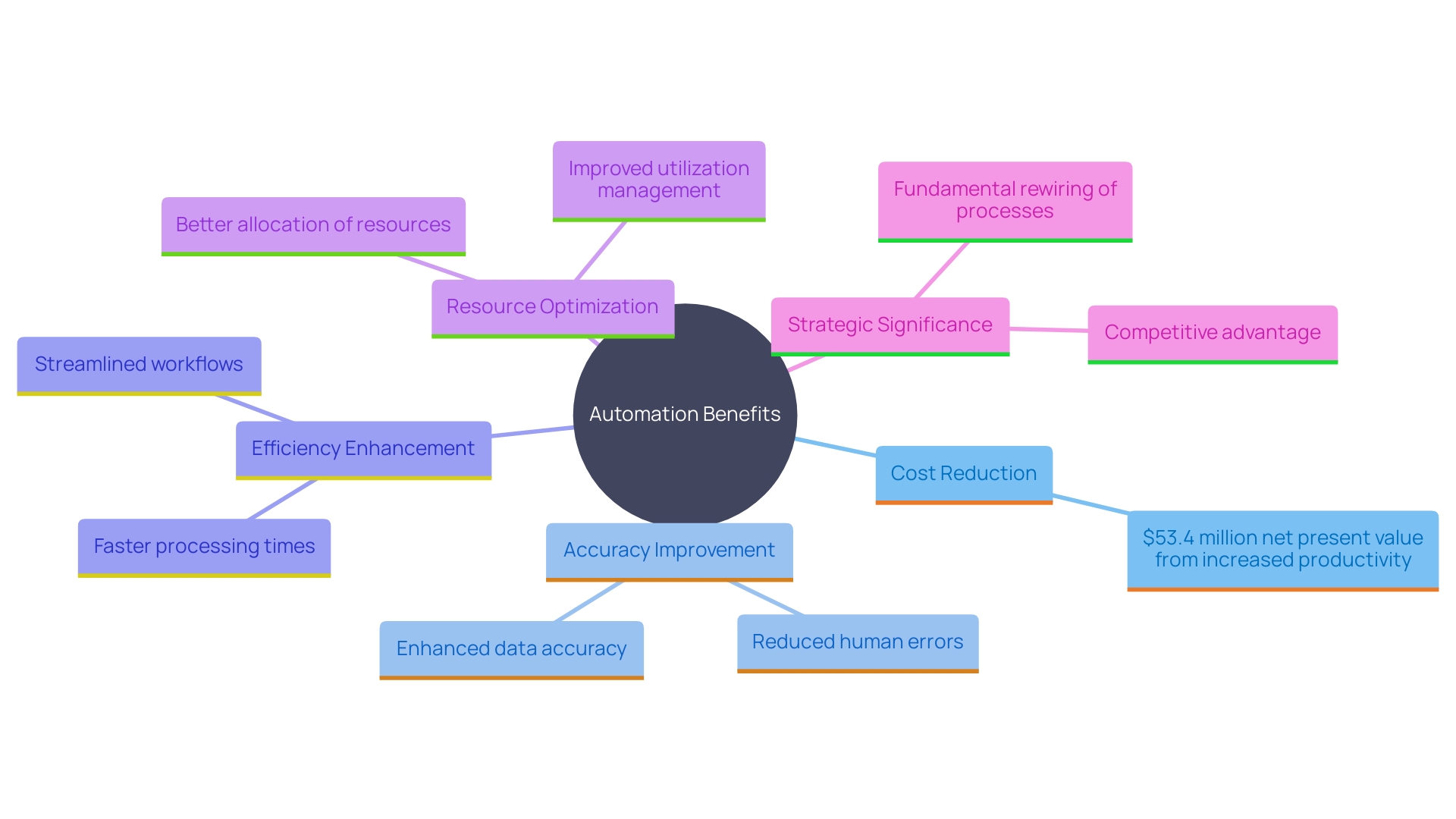
Enhanced Agility and Flexibility
Automated workflows empower businesses to swiftly adapt to evolving market demands and customer needs, ensuring agility and minimizing downtime. For instance, St. James Winery, a leading wine producer in the U.S., turned to mechanization to combat labor shortages and drive growth. Their decision not only improved efficiency but also boosted their margins. The case of Delivery Hero further exemplifies this, as they streamlined their account recovery process, significantly reducing employee downtime and enhancing productivity.
In the broader industrial sector, the demand for mechanization is projected to grow by 9.3% annually, reaching £227.6bn by 2030. This surge is driven by the need for streamlined operations across various industries, including manufacturing, which accounts for over 30% of the market. The transition towards mechanization is a reaction to the difficulties created by inflation, Brexit, and the COVID-19 pandemic, with 94% of IT decision-makers adopting technology modifications to ensure operational continuity and lessen crisis fatigue.
Furthermore, the use of automated processes assists organizations such as Lincoln Financial in shifting from expensive legacy systems to more adaptable settings, lowering operational expenses and facilitating improved decision-making. By concentrating on areas hindered by inefficiencies, companies can remove superfluous layers in procedures and improve overall operational effectiveness, as emphasized by industry specialists.
Despite the challenges, such as resistance to change and technical issues, the benefits of automation are clear. It not only mitigates the risk of job displacement but also spurs economic growth and boosts productivity, making it a crucial strategy for forward-thinking organizations.
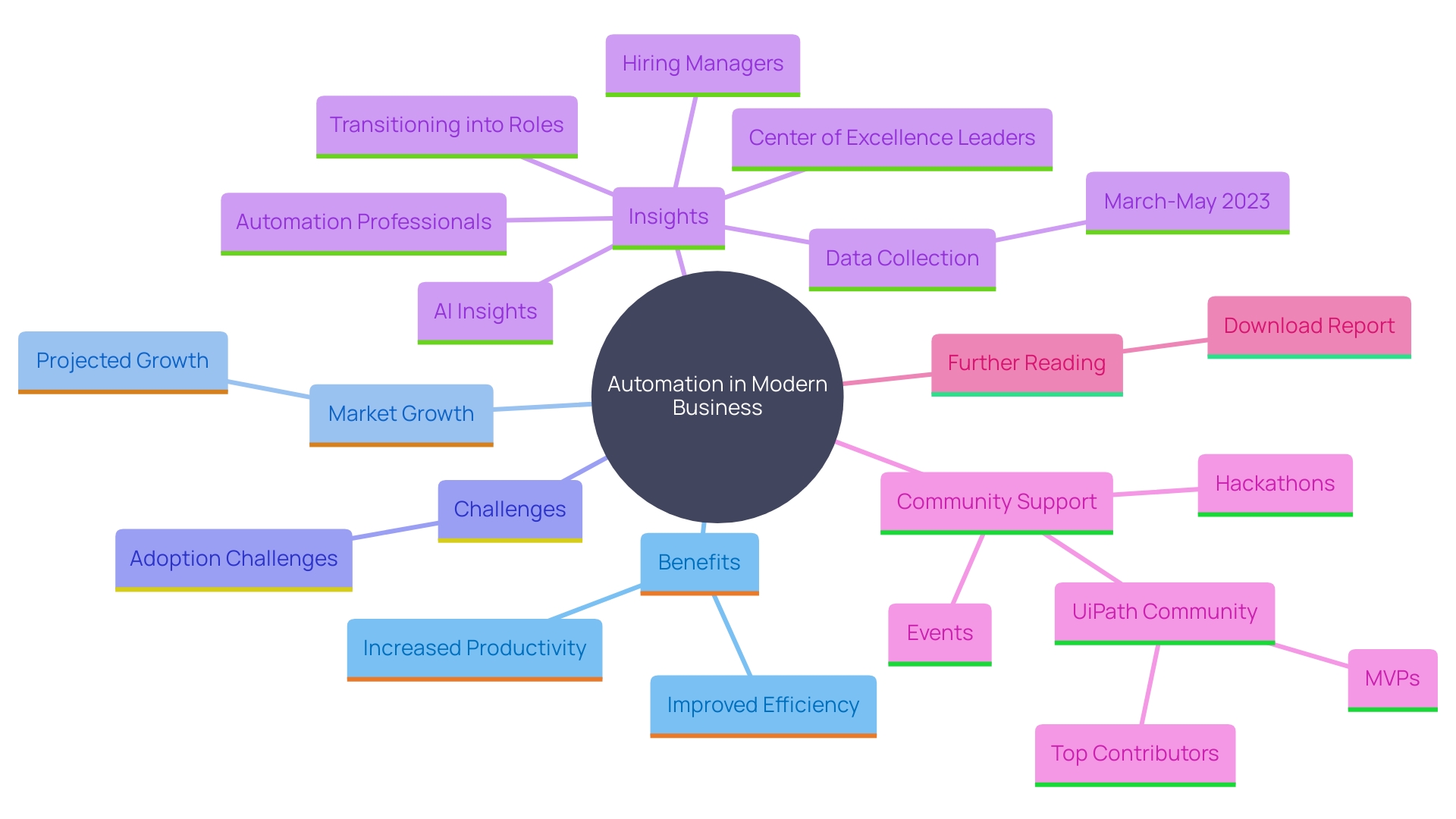
Improved Data Analysis and Performance Measurement
Automation enables the collection of data throughout processes, providing invaluable insights for performance measurement. For instance, Check Technologies achieved a 25% cost reduction through resource optimization and accelerated data processing, thus transforming raw data into actionable insights more efficiently. This agile approach, powered by tools like Airflow, allows businesses to organize and clean data, driving both existing and new feature improvements.
In a world of extraordinary data volumes and complexities, relying solely on human intuition for performance metrics is becoming obsolete. Sophisticated machinery and AI tools assist in redefining key performance indicators (KPIs), ensuring they align better with desired outcomes. As organizations grow, smarter KPIs driven by data and automation become crucial for sustained improvement.
Notably, 69% of managerial tasks are expected to be automated by 2024, highlighting the growing importance of strategic deployment. Automation not only enhances decision-making but also fosters continuous improvement, helping businesses realize significant cost optimization benefits. By integrating automation with AI, companies can make informed decisions that propel them towards their short-term and long-term goals.
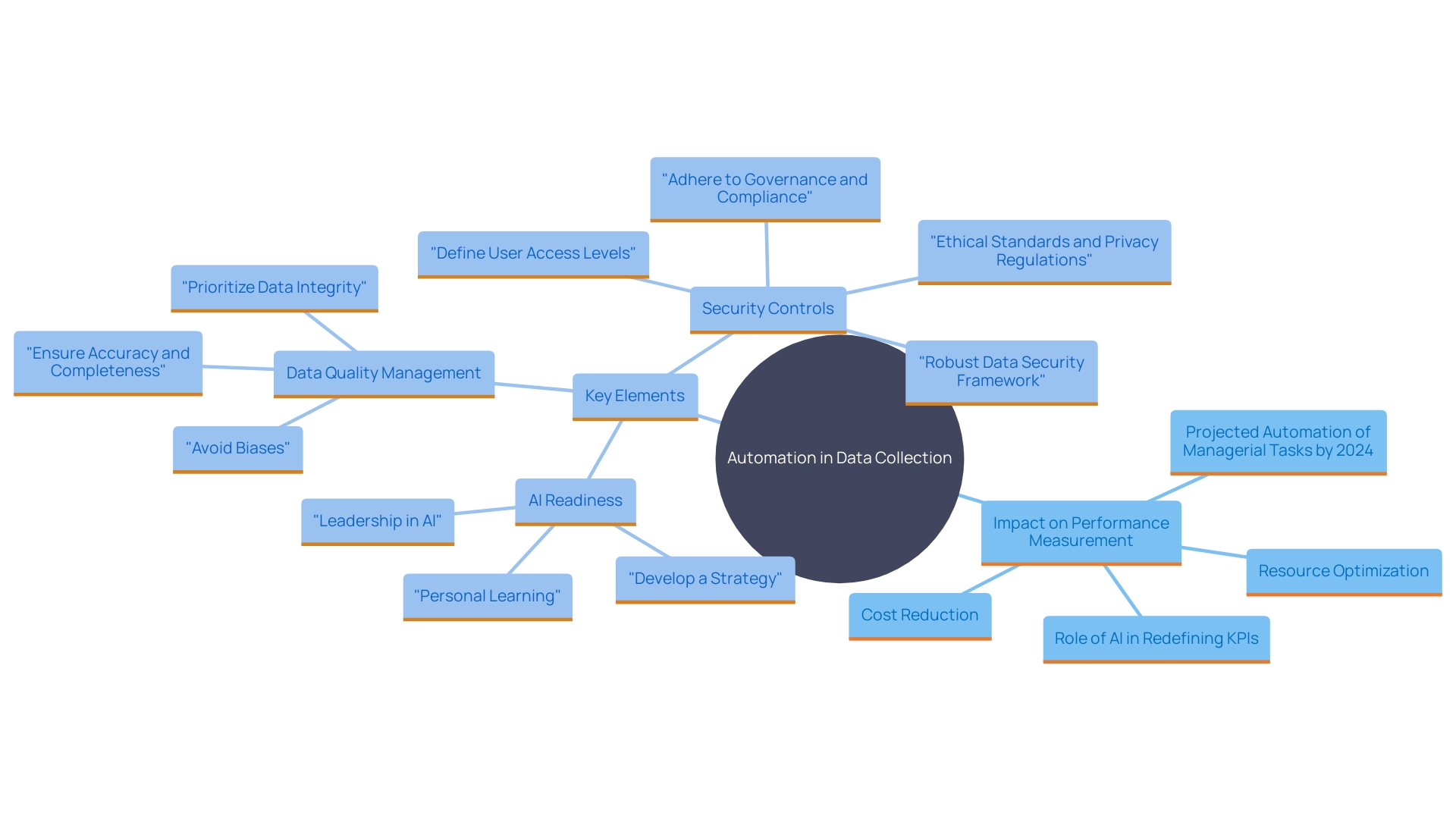
Conclusion
Automated workflows are transforming the business landscape by enhancing efficiency, productivity, and accuracy. By streamlining repetitive tasks, organizations can redirect their workforce to focus on higher-value activities, as seen in the success stories of Delivery Hero and St. James Winery. These examples highlight how automation boosts operational effectiveness while improving employee satisfaction and safety.
The financial benefits of automation are significant, yielding substantial cost savings and improved service levels. With the ability to respond quickly to customer demands, businesses can achieve faster turnaround times and greater customer satisfaction. Real-time insights from automated systems enhance visibility, enabling organizations to identify and resolve inefficiencies proactively.
Furthermore, automation facilitates better resource management and data analysis, offering valuable insights that drive performance improvements. As industries continue to evolve, the strategic importance of automation becomes increasingly clear, allowing organizations to adapt to market changes with agility and flexibility. The integration of advanced technologies like AI amplifies these advantages, positioning businesses for success in competitive environments.
In conclusion, adopting automated workflows is essential for organizations seeking to optimize processes, reduce costs, and enhance overall performance. Companies that effectively implement automation are better prepared to navigate the complexities of modern business, unlock new growth opportunities, and achieve sustainable success.
